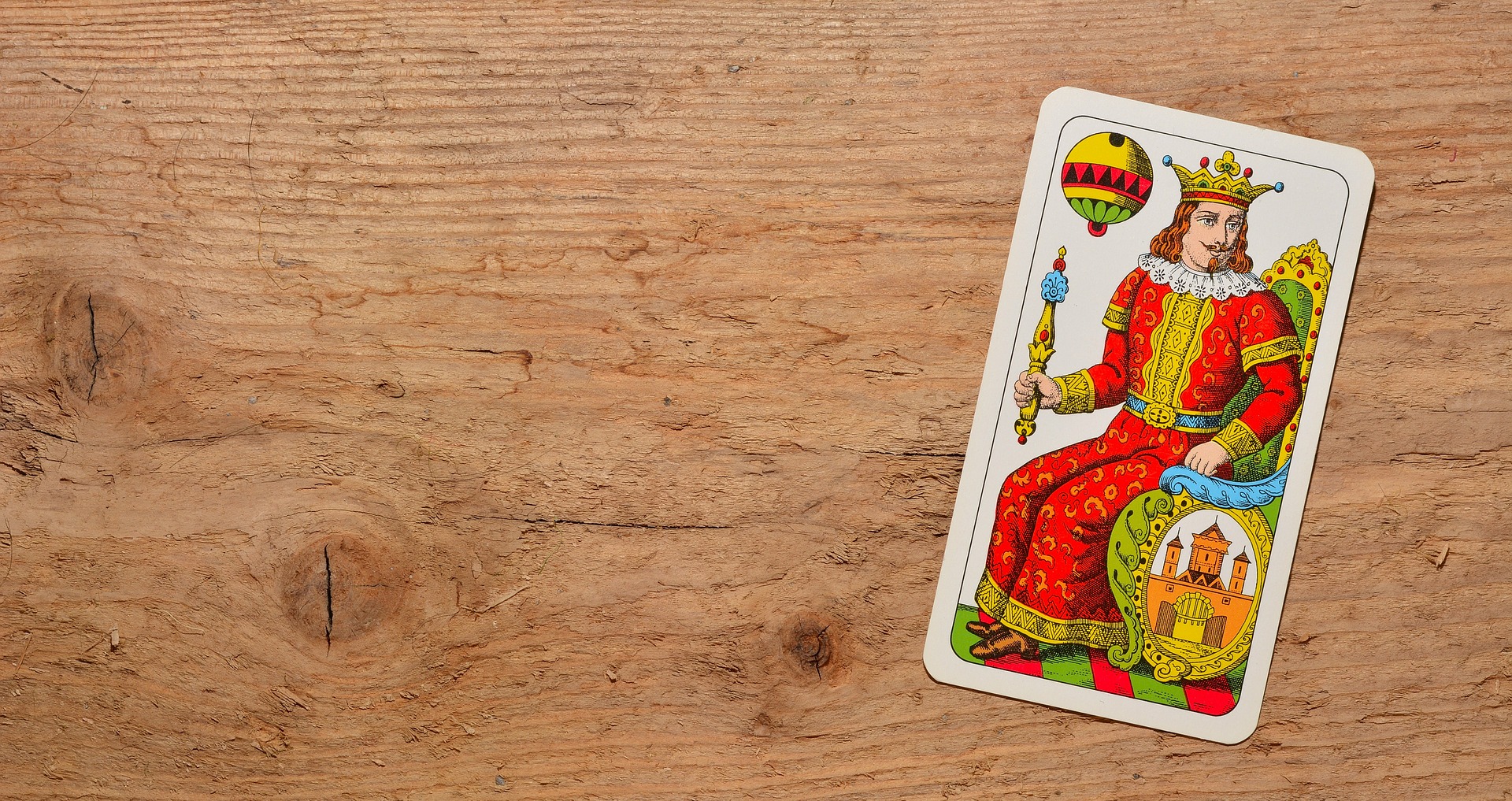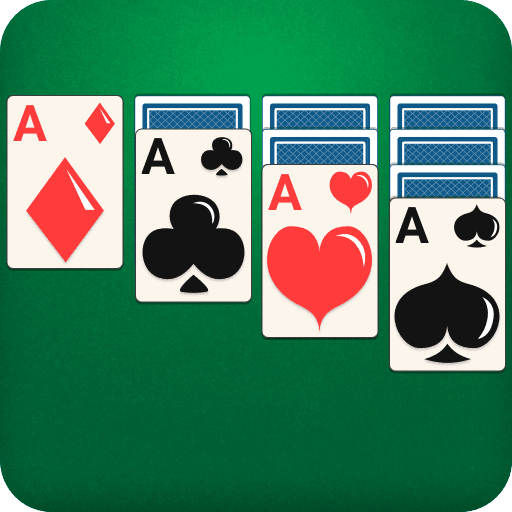The history of Solitaire games

The history of solitaire games, or at least of many of them, is still a mystery even nowadays when thousands of these card game aficionados have tried to look into their origins. For games that first appeared in the second half of the 20th century, it is easier to trace back their evolution to their creator, but for those much older the tracks are harder to follow. Regardless, not everything is an enigma. There are snippets of information here and there to help us form a better picture of the origins of these beloved card games.
Origin of solitaire games
It is believed that solitaire games first appeared at the end of the 18th century in Europe, with historians still debating between Scandinavia and Eastern Europe as their original place of birth. Regardless, these card games became widely popular only in the 19th century in France, spreading to the UK and Germany at the end of the century.
With the exception of the US and Canada, the game is known worldwide as Patience, with the name deriving from the French word with the same spelling and meaning. The reason is quite simple: these types of card games were regarded as an exercise of patience. Even in North America, the name adopted for these card games, Solitaire, also comes from French and means solitary or alone, a fitting name since these are single-player games.
Klondike
Klondike is the most popular version of Solitaire. So much so, that the term Solitaire when used by itself generally refers to this game in particular.
As with almost all the other versions of Solitaire, the origins of the Klondike are also complex. It is commonly accepted that the game first appeared at the end of the 19th century in its homonymous region in Canada. The gold prospectors of that area, famous during the gold rush, are traditionally credited with creating the Klondike or at least introducing in it the changes that would later make it so popular.
Another theory defends that the game was created by Richard Canfield, who included it in his casinos, leading to the game taking up the name Canfield for some time. However, Canfield used the name Klondike in his casinos, which weakens this theory. Furthermore, the name Canfield also became popular around the same time associated with another Solitaire game known as Demon in the UK, which may have prompted some confusion with the Klondike version.
The history of the Solitaire Klondike cannot be completed without mentioning its inclusion in Microsoft’s Windows 3.0 in 1990. Its boom in popularity was so impressive that the history of personal computers and of solitaire became intertwined at that point.
Spider Solitaire
The history of Spider Solitaire seems to be even more mysterious than that of its predecessor. The first mention of it can be found in the 1917’s book “Culbertsons Card Game Complete with Official rules”, written by famous bridge player Ely Culbertson. It is not clear whether he could be its inventor or if he was merely mentioning the rules of a solitaire game already known at the time.
The first reference to the Spider Solitaire as we know it today only appears in 1949. The history of its name is also disclosed around this time. The “Spider” in its name comes from the 8 foundations the players need to build in order to win the game - eight as in the number of legs most spiders have.
The game fell under the radar again following 1949, until its final return in 1998. In this year, Spider Solitaire was included for the first time in Microsoft’s Windows software, reaching a wider audience worldwide. It was an immediate success, leading it to become the second most popular and most played solitaire game today, only behind the classic Klondike.
FreeCell
The history of FreeCell is remarkably clearer than that of Spider, even if its origin is still up to debate. Many believe that this card game was inspired by a much older one called Eights Off, in which players had eight free cells to help them move the cards around. This old game then evolved to become Baker’s game, a solitaire card game whose only difference from the FreeCell we play today is the fact that sequences were built by suit and not by alternating colors.
In 1945, the Swedish book “Världens bästa patienser och patiensspel” (The World's Best Patiences and Patience Games) described a game called Napoleon in St. Helen (not to be confused with the game with the same name that we know today) which was already remarkably similar to FreeCell. In fact, it only had two differences: the last four cards of the stock were dealt into the free cells and not the tableau, and an empty space on the tableau could only be filled with Kings.
Both the Baker’s game and the Swedish Napoleon in St. Helen seem to be suitable predecessors of today’s Freecell, but it is still a mystery if they both were independently inspired by Eights Off or if Mr. C. L. Baker was acquainted with the Swedish variant already.
However, we do know that it was the Baker’s game that influenced the creator of FreeCell: Paul Alfille.
While studying the mathematics behind the Baker’s game, Alfille decided to build the sequences on the tableau using alternate colors, increasing the winnability of the game. To further his study, in 1978, he created the first virtual version of the game using the Tutor programming language for the PLATO educational computer system and named it Free Cell.
The enormous success of the game would have to wait until the 90s, though. Jim Horne, working for Microsoft, learned the game through the PLATO system and created a version to be implemented in the Windows software. The game was first included only in special editions of the software starting in 1992. It was finally included in the Windows 95 software, making it into every household or office with a PC.
Other Solitaire games
Being the most popular Solitaire games, the history of Klondike, Spider and FreeCell has been a subject of interest to many fans and historians. Yet, as mentioned above, their origins are still largely obscure.
Finding the roots of many solitaire games has proven virtually impossible, either because there are no references to the games or the ones that exist are contradictory, or because they have been embellished to make the games more interesting for some reason.
A good example of this latter is the Napoleon at St. Helena game, also known as Forty Thieves. Is it truly possible that Napoleon was its creator? Is it true that he spent his days in exile playing nothing else other than this solitaire game? There is no proof to the contrary, but also nothing that clearly confirms these claims.
Few solitaire games have a straightforward history. The Tripeaks, for example, was invented in 1989 by Robert Hogue. Baker’s Dozen (not to be confused with Baker’s game, the predecessor of FreeCell), was first published in 1883 by Dick. However, these are exemptions.
Even more recent variants of Solitaire are sometimes hard to trace back to their origins. For example, Addiction is a fairly new addition to the Solitaire games family, yet finding its creator proves to be a herculean task.
In the end, knowing the history of Solitaire games can be interesting but nothing beats the pleasure of playing them. Have fun challenging these card games and keep an eye out for any new developments regarding their origins.


